#republican rome
Text


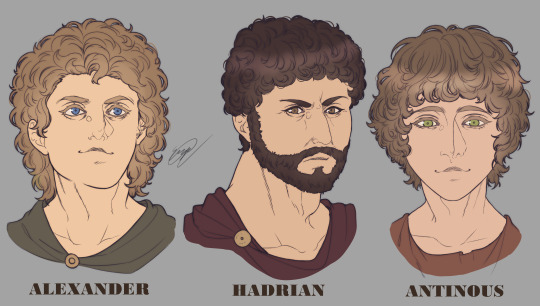
(Full view plz)
Some historical characters that will be making an appearance in the webcomic I'm developing!
#webcomic#ancient history#ramesses ii#hatshepsut#amasis#mark antony#cleopatra vii#octavian#augustus#alexander the great#hadrian#antinous#ancient egypt#ancient rome#ancient greece#roman egypt#hellenistic egypt#imperial rome#hellenistic period#republican rome#ptolemaic egypt#shmswart#thefollowersart
85 notes
·
View notes
Text
Reblog if you have Roman Republic content on your blog
(aside from just during the international Tumblr holiday that is the Ides of March)
Put in the tags who your favs are
#roman history#ancient rome#roman empire#how often do you think about the roman empire#julius caesar#ancient history#caesar#augustus#pompey#roman republic#late Republic#Republican rome#pax romana#pompeius magnus#sextus can sext us#Sextus Pompeius
7 notes
·
View notes
Text

I leave the Ancient World behind and travel forward to the Cold War in my books.
The Western Roman Empire has fallen in my podcast. So now I move to Byzantines and Crusading Medieval Europe podcast.
#books#podcasts#republican rome#roman empire#western roman empire#eastern roman empire#byzantium#religious schism#latin church#greek church#frankish europe#crusaders#cold war#modern history#modern politcal history#spqr
1 note
·
View note
Text
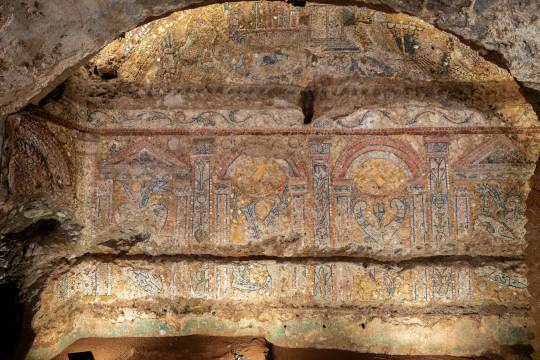
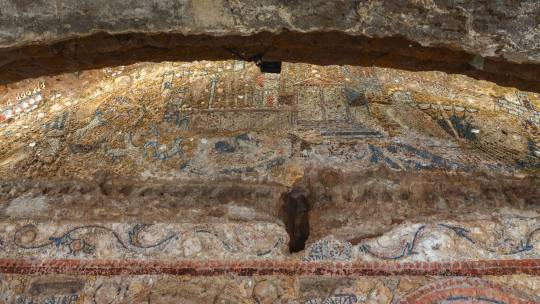
‘Incredible’ Mosaics Were Found in an Ancient Luxury Home in Rome
Italy’s Culture Minister Gennaro Sangiuliano has called the works “an authentic treasure.”
Researchers working in the Archaeological Park of the Colosseum in Rome have shared their discovery of luxurious mosaic-tiled rooms found in an ancient home on the site, which they believe may have belonged to a Roman senator. Created from shells, glass, white marble, and Egyptian blue tiles, the mosaics have been described by Italy’s Culture Minister Gennaro Sangiuliano as “an authentic treasure”.
The “rustic” mosaics, found on the grounds surrounding the Colosseum in the heart of the city, date to the late Republican Age, in the last decades of the second century B.C.E., and show a series of figurative scenes. They once decorated a townhouse, or domus, owned by an upper class citizen. Italy’s Ministry of Culture have said that “due to the complexity of the scenes depicted” and their age, the mosaics are “without comparison.”

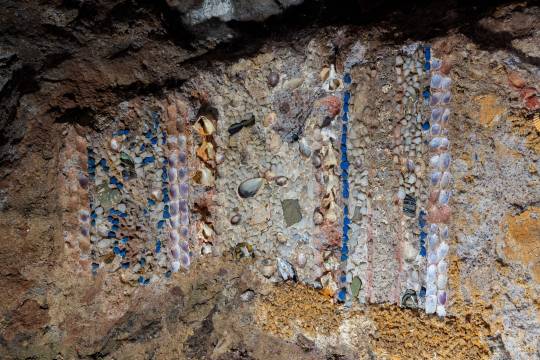

One mosaic depicts a coastal city with towers and porticos, with three large ships floating by on the ocean waves. The culture ministry believes this could be a reference to naval victories achieved by the owner of the home, which is believed to have been a Roman senator. This is supported by historical sources describing the area as having been occupied by such high-ranking members of society.
The decorated walls were likely located in the home’s dining rooms, where luxurious banquets would be hosted, and guests at these events were likely wowed with “spectacular water games,” according to the culture ministry, based on the presence of lead pipes set into the walls.
In the reception room, an extremely well preserved decorated stucco featuring landscapes and figures was also discovered. Other designs include vines and lotus leaves flowing from vases, musical instruments, and tridents.

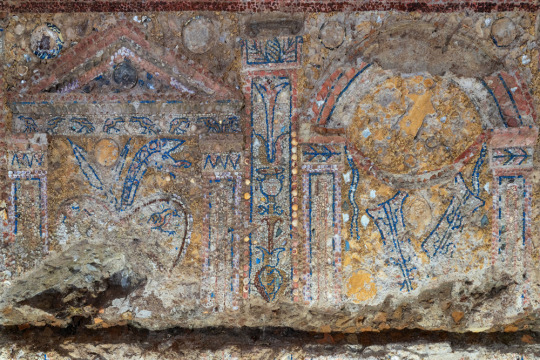

The mosaic walls were first discovered near the Colosseum in 2018, but excavation at the site will continue into 2024, and more rooms could be discovered. Alfonsina Russo, the Director of the Archaeological Park of the Colosseum, has said that once the domus is full uncovered, “we will work intensely to make this place, among the most evocative of ancient Rome, accessible to the public as soon as possible.”
By Verity Babbs.
#‘Incredible’ Mosaics Were Found in an Ancient Luxury Home in Rome#Archaeological Park of the Colosseum#Late Republican Age#second century B.C.E.#mosaic#roman mosaic#ancient artifacts#archeology#archeolgst#history#history news#ancient history#ancient culture#ancient civilizations#ancient rome#roman history#roman empire#roman art
1K notes
·
View notes
Text


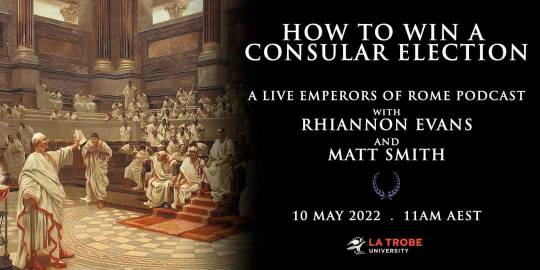
#republican rome#emperors of rome podcast#podcast#they read my question and rhiannon answered it#i was ecstatic#not that i've got any followers#mine#when will they do another?????
0 notes
Text
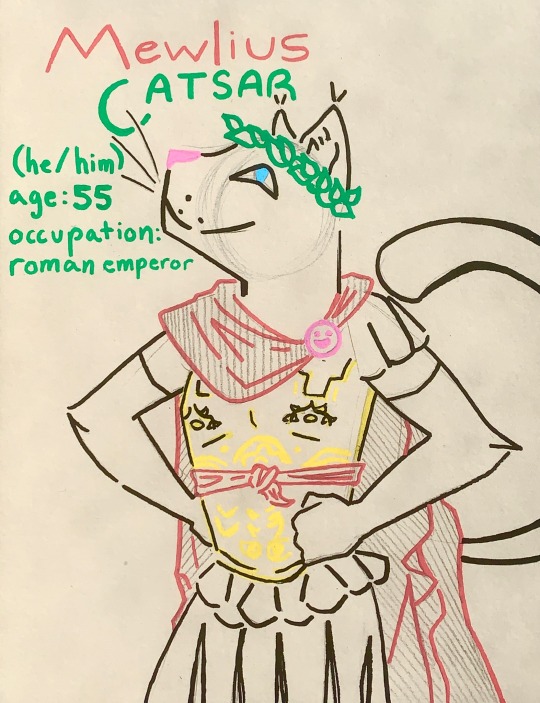
oh boy I sure hope nothing bad ever happens to my new OC Mewlius Catsar I just love my little boy so much even if he is consolidating his power in a way that grows worrisome
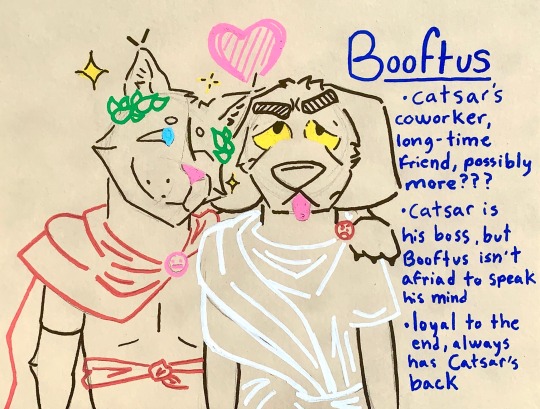
also here’s his bestie (and maybe even potential love interest???) Marcanine Wufius Booftus! relationship lore to come, but suffice to say, Catsar knows that Booftus will always have his back
#he was never actually an emperor#he’s the last ruler of Rome’s Republican era#my bad thanks @luenkel for catching that#myart#oc#oc art#furry#furry art#anthro#anthro art#traditional art#cartoon#updates to come#ides of march#julius caesar#brutus#caesar#rome#ancient rome#i’m sorry
109 notes
·
View notes
Text

Roman silver coin minted in 55 BCE, during Julius Caesar's campaigns in Gaul, by Publius Fonteius Capito, one of the tresviri monetales (mint officials) for that year. On the obverse, the helmeted head of the war god Mars, with a small representation of a tropaeum (trophy) behind him. On the reverse, a Roman horseman rides down two enemy soldiers, identified by their helmets and shields as Gauls.
#classics#tagamemnon#history#ancient history#Ancient Rome#Roman Republic#Roman history#art#art history#ancient art#Roman art#Ancient Roman art#Roman Republican art#artifacts#artefacts#coins#ancient coins#Roman coins#Ancient Roman coins#numismatics#ancient numismatics#Roman numismatics
108 notes
·
View notes
Text

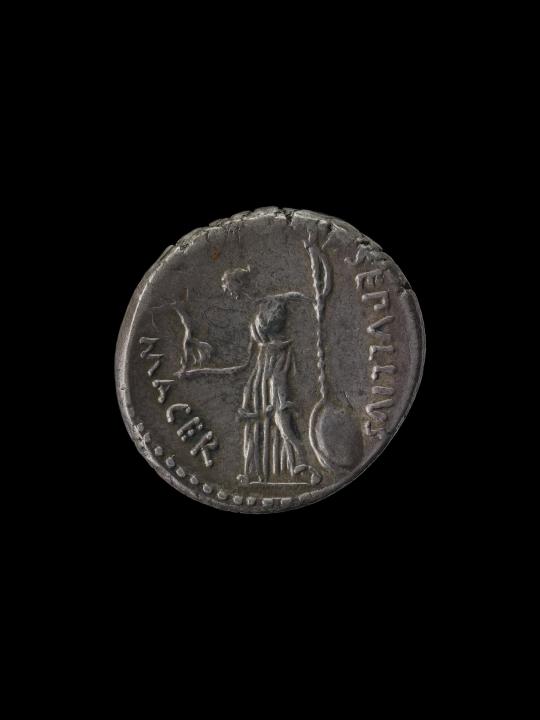
Denarius with head of Julius Caesar (obverse) and Venus holding Victory (reverse), minted under P. Sepullius Macer at Rome
Roman, Republican Period, 44 B.C.
silver
British Museum
#Ides of March#Julius Caesar#Caesar#Ancient Rome#Roman Republic#Republican Period#Rome#denarius#silver#coin#numismatics#Venus#Victory#British Museum
100 notes
·
View notes
Text
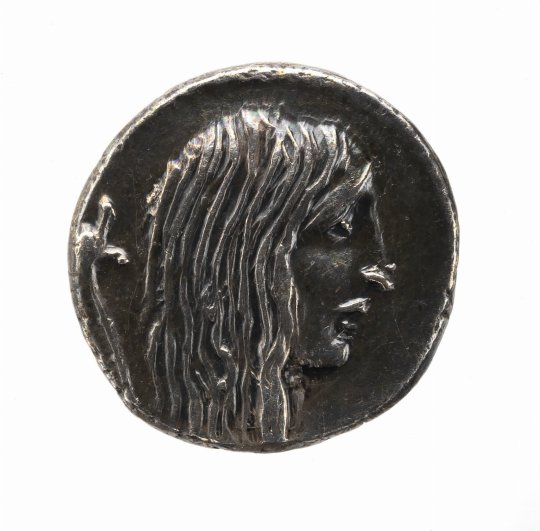

~ Denarius.
Place oforigin: Rome, Italy
Maker: Lucius Hostilius Saserna
Period: Republican Roman Period
Date: 48 B.C.
#ancient#ancient art#history#museum#archeology#archaeology#ancient currency#currency#denarius#long hair#diana#spear#stag#rome#roman empire#ancient roman#republican period#Lucius Hostilius Saserna#48 b.c.
527 notes
·
View notes
Text
one of the (many) funny things about ancient rome imo is that, as an adult, you could just get yourself legally adopted by another family for whatever reason, even, as in one notable case, by someone younger than you so that you could be eligible for a specific political office
#like can you IMAGINE the modern political landscape if this was still common practice???#like ALL of the republican politicians who would try to get adopted into the trump family so donald could be their daddy for real??????????#ancient rome#history#text
72 notes
·
View notes
Text
https://www.archaeology.org/news/12001-231215-rome-republican-domus
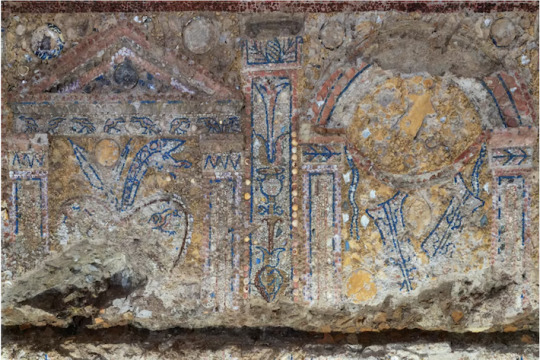
Sounds like this was an important house. I'm astounded, as I often am, that this was found between the Roman Forum and the Palatine Hill. You'd have thought that area was gone over with a fine-toothed comb in the 19th century.
21 notes
·
View notes
Text
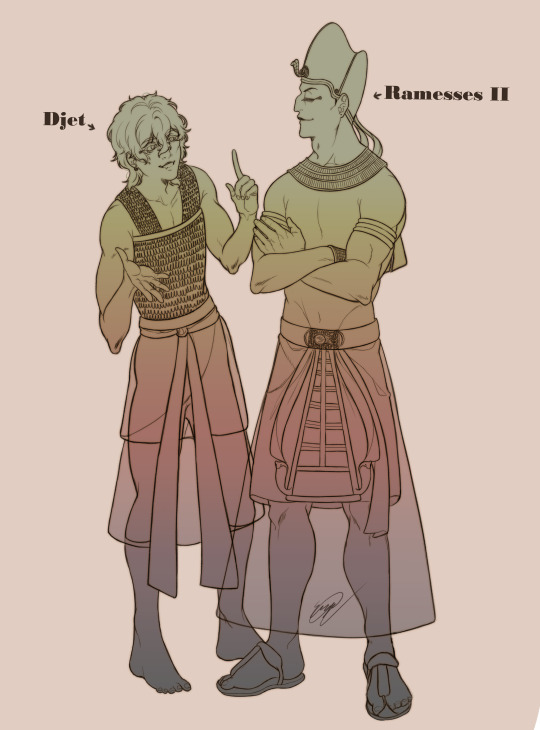









My webcomic characters ft. the historical characters they were close to!
#webcomic#ancient history#ancient egypt#amasis#ramesses ii#ptolemaic egypt#ancient rome#republican rome#cleopatra#mark antony#pharaonic egypt#ptolemy philadelphus#imperial rome#cleopatra selene ii#alexander helios#cleopatra vii#ptolemy xv#caesarion#the gracchi#tiberius sempronius gracchus#gaius sempronius gracchus#cornelia#hadrian#antinous#djet#khawy#iaret/chloe#sempronia#lucius#the followers of the divine snake
31 notes
·
View notes
Text
Yes, I‘m still mad about Julius Caesar and the electoral college.
Or, more precisely, I’m mad about how people’s perceptions of Julius Caesar resulted in the creation of the USA’s electoral college.
Our attempts to make sense of history are inevitably prejudiced by our own viewpoints. There’s no reliable evidence Caesar plotted to oppose the government before 50 BCE, or that he intended to hold onto power indefinitely prior to 45 BCE (and even that’s uncertain), but the popular view of Caesar provided both a boogeyman to future republicans and a model for future despots like Napoleon.

The Founding Fathers looked at Caesar and decided, “He destroyed the republic by becoming too popular, and abusing the people’s trust...”

...Rather than “The republic fell due to 20 years of near-constant civil war,” the view advanced by historians like Robert Morstein-Marx, or a host of other systemic factors I won’t go into here.
The perception of how Caesar came to power resulted in America’s terrible electoral college system, which is meant to prevent another Caesar from emerging, but in practice disenfranchises a large portion of American voters.


The stories we use to make sense of the past influence the policies we support for the present, and in turn influence our future.
(Nicholas Cole, “Republicanism, Caesarism and Political Change,” A Companion to Julius Caesar)
#julius caesar#historiography#roman history#jlrrt reads#nicholas cole#republicanism in the founding fathers sense#ancient rome#jlrrt speaks#jlrrt essays
17 notes
·
View notes
Text
i also think between act 2 and 3 meredith had her own proscriptions with the justification she was punishing people who were harbouring apostates or something like that and that she would use the seized assets to help rebuild kirkwall, except the money ends up only going to the templars and chantry
#tbh i think you could take any event from late republican rome and slap it on kirkwall and it would work#text#denerome#she'd obviously be targeting the nobles who were too critical of her or made too many demands for their to be a new viscount#adding this to denerome but i do think she would just do something like this in canon
8 notes
·
View notes
Photo
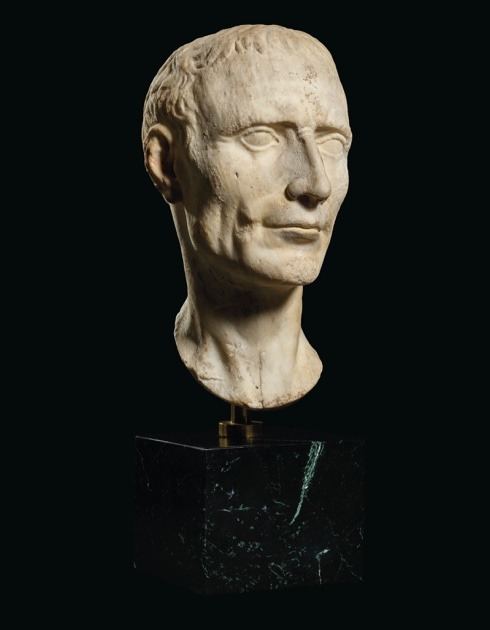
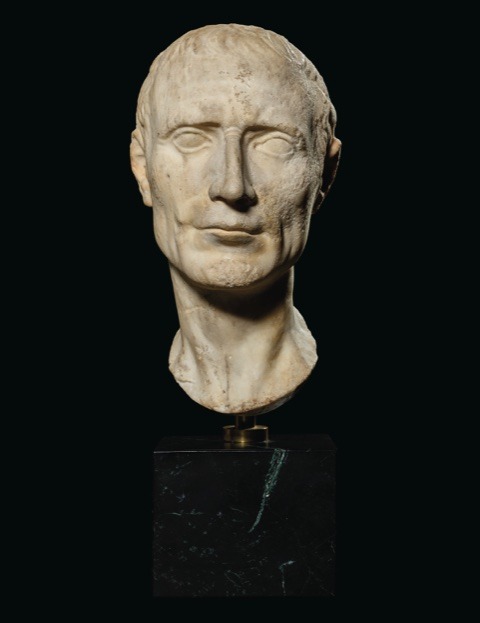

A ROMAN MARBLE PORTRAIT HEAD OF A MAN
REPUBLICAN PERIOD, CIRCA LATE 1ST CENTURY B.C.
11 7/16 in. (29 cm.) high
In a letter to the previous owner from 1991, Cornelius C. Vermeule wrote: "This Republican head does look like Julius Caesar, but is probably someone else of his era, like the head restored on the Barberini togatus of the man holding the busts of his two ancestors. There was also a great vogue for reviving Republican portraiture in the late First and early Second centuries A.D., and Republican lookalikes, such as Hadrian's brother-in-law L. Julius Ursus Servianus."
As Vermeule notes, this example's likeness to Julius Caesar is striking, particularly to a bust of the dictator known as the "Chiaramonti-Pisa Type," now in the Vatican Museum (see F.S. Johansen, "The Portraits of Marble of Gaius Julius Caesar: A Review," fig. 1a). As he goes on to explain however, it was common practice beginning in the Republican era to commission private likeness after prominent public figures and likely this is what we have here. In his extensive study, Johansen writes that he believes only two actual representations of Caesar himself exist in marble, the first being the aforementioned example, and the other being a bust thought to be commissioned in his lifetime, known as the "Tusculum type" (see figs. 1a and 15a, op. cit.). Nevertheless, the present example illustrates that while the veristic style was certainly in vogue with reference to Republican portraiture, it did not prohibit artists nor their patrons from using other people's likenesses as inspiration.
#A ROMAN MARBLE PORTRAIT HEAD OF A MAN#REPUBLICAN PERIOD CIRCA LATE 1ST CENTURY B.C.#marble#marble statue#marble bust#ancient artifacts#archeology#archeolgst#history#history news#ancient history#ancient culture#ancient civilizations#ancient rome#roman history#roman empire#roman art
29 notes
·
View notes
Text
shaking academics by the lapels like shut up about trying to reconstruct a historically accurate account of catullus' life with a factual chronology shut up about separating 'truth' from 'fiction' and the historical figure from the poetic one
#I don't care + it's impossible to know + it's not even a useful framework for looking at his poems#thoughts#fitting catullus into the cultural world of late republican rome & looking at his interaction w it: good. beloved. I do this all the time#trying to make a solid historical figure from the contradictory self representation presented in his work: why are we doing this#the exception to this is when it's funney or I like it. but like let's not be too serious here#<- person who's trying to find articles about time in catullus' poetry & finding nothing but futile attempts to reconstruct his life
40 notes
·
View notes